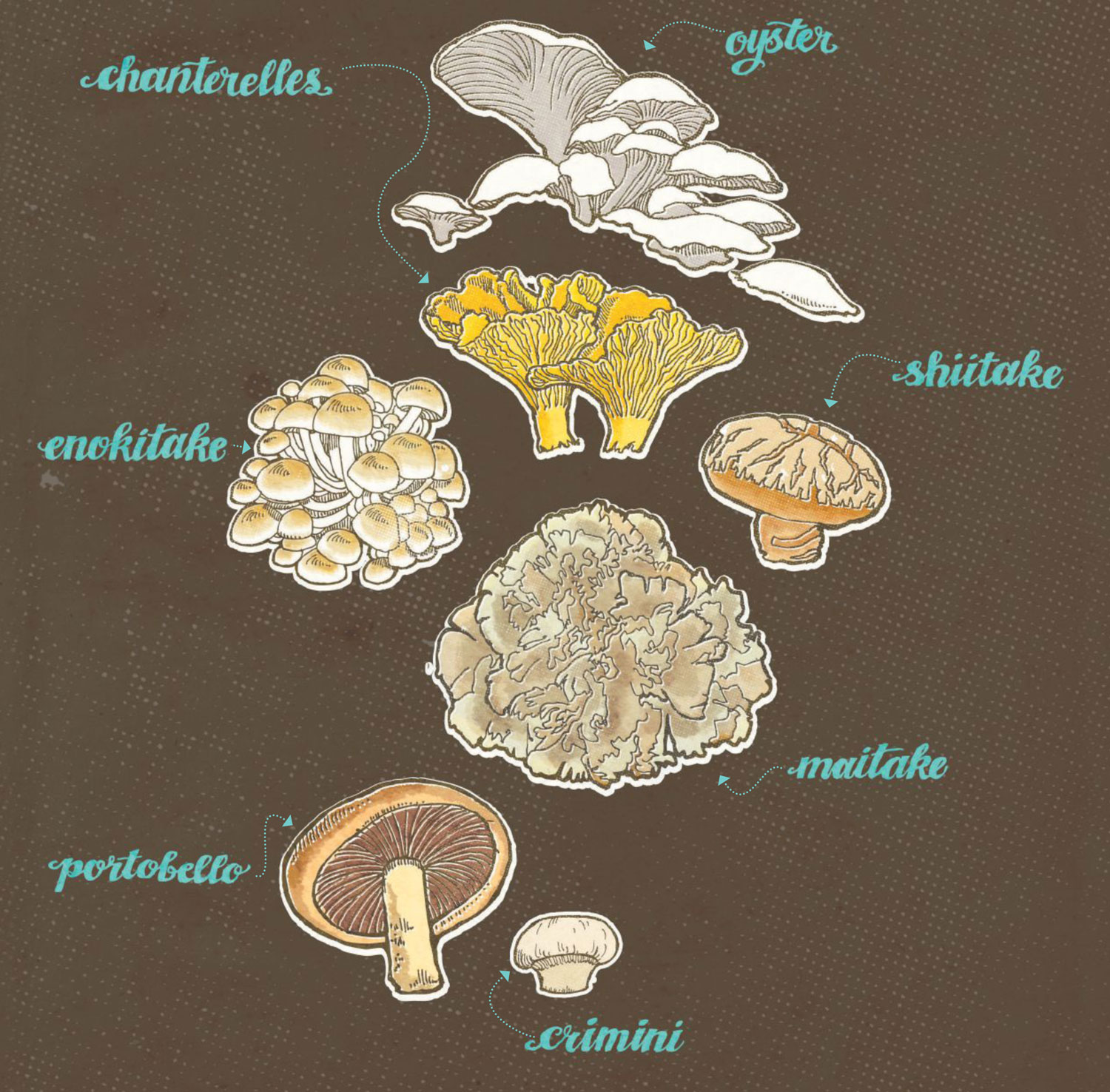Utterly Edible Mushrooms
Chanterelles
Chanterelles have never been successfully cultivated—they are found only in the wild.
They are native to northern Europe, North America, Asia, and Africa.
In the 1700s in France, chanterelles were served to nobility and became a much-sought-after delicacy.
Chanterelles are one of the richest sources of naturally-occurring Vitamin D available.
Enokitake
Shown here is the wild variety; cultivated versions have longer, slender stems with tiny caps and are pure white— a result of being grown in an environment high in CO2 and not exposed to light. Most enokitake found in supermarkets have been grown inside a plastic bottle.
Wild enokitake are extremely hardy, often growing in snowy environments, they can freeze solid, then continue growing once thawed!
Portobello
The most mature variety of the same mushroom as the button (youngest) and crimini (more mature than the button but less than 4 inches tall with an un-opened cap), the portobello is grown until its cap fully opens.
One portobello mushroom contains more potassium than a banana!
Oyster
Oyster mushrooms were first cultivated in Germany during World War I.
Not only do they look like shucked oysters (hence the name), some are said to taste similar to oysters as well.
Nematodes beware: the oyster mushroom is carnivorous—it can kill and digest you!
Shiitake
The name shiitake is Japanese for shii (the type of tree that these mushrooms typically grow on) and take (mushroom).
The earliest record of shiitake cultivation is during the Southern Song Dynasty in Japan in 1209.
They are a symbol of longevity in Asia, believed to have been used medicinally by the Chinese for more than 6000 years.
Maitake
The word maitake means “dancing mushroom” in Japanese.
Commonly known as hen-of-thewoods (not to be confused with chicken-of-the-woods, which is a different type of mushroom).
They can grow very large, up to 6 feet in diameter and weighing up to 100 pounds!
Maitake grows in clusters at the base of trees, most often oaks, and grows in the same place for a number of years.
Crimini
A younger version of the portobello.




